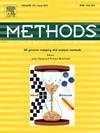drivermed:利用嵌入特征和驱动突变评分的互斥性来识别癌症驱动基因。
IF 4.3
3区 生物学
Q1 BIOCHEMICAL RESEARCH METHODS
引用次数: 0
摘要
有效识别癌症驱动基因在癌症的发生、诊断和治疗中起着关键作用。目前的无监督驱动基因识别方法通常将多组学数据整合到基因功能网络中,并采用网络嵌入算法来学习基因特征。此外,他们认为互排他性和突变频率是识别驱动基因的关键概念。然而,现有的方法忽略了嵌入空间中互斥性可能产生的重要影响。此外,他们简单地假设所有驱动基因都表现出高突变频率。幸运的是,我们探索了学习特征中植入的互斥性,并验证了学习特征之间的欧几里得距离与互斥性密切相关,它们可以揭示更多的互斥性信息。因此,我们在此基础上设计了一个无监督驱动基因预测框架drivermed,并提出了一种新的驱动基因突变评分策略。首先,我们设计了一个特征聚类算法来生成基因模块。在每个模块中,使用学习到的特征的欧几里得距离来计算基于相关互斥性的每个基因的模块重要性分数。然后,根据大多数驱动基因具有中等突变频率的事实,针对每个基因设计驱动突变评分函数,对现有的突变频率评分策略进行优化。最后,使用模块重要性得分和驱动突变得分的加权和来确定基因的优先级。实验结果和分析表明,drivermed能够检测出新的癌症驱动基因和相关功能模块,优于其他5种最先进的癌症驱动识别方法。本文章由计算机程序翻译,如有差异,请以英文原文为准。
DriverMEDS: Cancer driver gene identification using mutual exclusivity from embeded features and driver mutation scoring
Efficiently identifying cancer driver genes plays a key role in the cancer development, diagnosis and treatment. Current unsupervised driver gene identification methods typically integrate multi-omics data into gene function networks and employ network embedding algorithms to learn gene features. Additionally, they consider mutual exclusivity and mutation frequency as crucial concepts in identifying driver genes. However, existing approaches neglect the possible important implications of mutual exclusivity in the embedding space. Furthermore, they simply assume that all driver genes exhibit high mutation frequencies. Fortunately, we explored the mutual exclusivity implanted in the learned features and have verified that the Euclidean distances between learned features are strongly related to the mutual exclusivity and they can reveal more information for the mutual exclusivity. Thus, we designed an unsupervised driver gene predicting framework DriverMEDS based on the above idea and a novel driver mutation scoring strategy. First, we design a feature clustering algorithm to generate gene modules. In each module, the Euclidean distances of learned features are used to calculate a module importance score for each gene based on the related mutual exclusivity. Then, following the fact that most of driver genes have intermediate mutation frequencies, a driver mutation scoring function is designed for each gene to optimize the existing mutation frequency scoring strategy. Finally, the weighted sum of the module importance score and the driver mutation score is used to prioritize the genes. The experiment results and analysis show that DriverMEDS could detect novel cancer driver genes and relevant function modules, and outperforms other five state-of-the-art methods for cancer driver identification.
求助全文
通过发布文献求助,成功后即可免费获取论文全文。
去求助
来源期刊

Methods
生物-生化研究方法
CiteScore
9.80
自引率
2.10%
发文量
222
审稿时长
11.3 weeks
期刊介绍:
Methods focuses on rapidly developing techniques in the experimental biological and medical sciences.
Each topical issue, organized by a guest editor who is an expert in the area covered, consists solely of invited quality articles by specialist authors, many of them reviews. Issues are devoted to specific technical approaches with emphasis on clear detailed descriptions of protocols that allow them to be reproduced easily. The background information provided enables researchers to understand the principles underlying the methods; other helpful sections include comparisons of alternative methods giving the advantages and disadvantages of particular methods, guidance on avoiding potential pitfalls, and suggestions for troubleshooting.
 求助内容:
求助内容: 应助结果提醒方式:
应助结果提醒方式:


